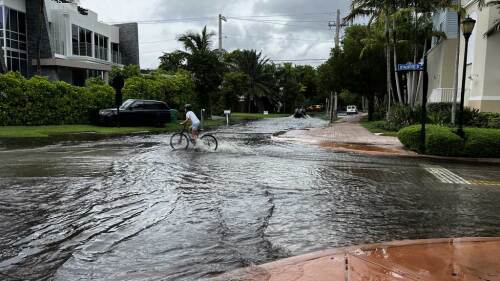In St. Louis, a pressing home repair crisis is disproportionately affecting Black homeowners who struggle to afford the upkeep of their homes. This issue is deeply rooted in a legacy of racial injustice, including redlining and restrictive covenants. To find solutions, ULI St. Louis collaborated with local organizations to develop strategies aimed at establishing a Home Repair Network (HRN), which will create a new centralized umbrella organization to address the city’s home repair dilemma. The goal of the effort is to raise awareness and take action to preserve existing housing, thereby stabilizing historically Black communities.
The efforts of ULI St. Louis have led to:
- Growing recognition that prioritizing home repair can promote equitable access to safe and healthy housing while strengthening historically Black communities.
- Increased support within the commercial real estate industry for a Home Repair Network (HRN) organization, which will coordinate existing home repair service providers under the umbrella of a standalone organization, aligning intake and capacity. The Missouri Foundation has provided startup funding to support this new organization for the next two years.
- Engaging leaders of the City’s Reparations Committee to include home repair in future discussions, with the aim of increasing awareness about the need for healthy home repair and training renovation teams to be equitably deployed across the city.
A Crisis in Slow Motion
St. Louis finds itself trapped in a crisis that is unraveling slowly. Homes in portions of the city’s historically Black communities, particularly in North St. Louis City and County, are witnessing a gradual decay, leading to eroding neighborhood stability. Many homes in these areas, most of which are over a century old, are deteriorating due to deferred maintenance.
Declining housing conditions and a lack of financial resources to repair them have impacted the health of homeowners and other occupants due to issues such as mold growth, exposure to lead paint, and unabated asbestos.
“I think coming into this we also knew how unaware the general public was of the issue,” says Aaron Williams, ULI St. Louis District Council Chair and member of the Public Private Partnership Product Council. “I think it was still a bit shocking how unsocialized the challenges are. I think we have discovered that the challenges are quite dynamic, and, of course, systemic. Other things are just being prioritized before home repair issues.”
While St. Louis does have public-sector and nonprofit home repair service providers, the resources available are scarce, and there is no centralized organization to efficiently address the crisis at scale. The severity of the problem is particularly acute in areas that were previously redlined and disinvested in due to discriminatory practices.
“When we think about how St. Louis as a community can better address the critical home repair needs of our population, that need tends to center in Black communities who are living in spaces and places in St. Louis where redlining was in place for years and years,” says Kelly Annis, staff lead for ULI St. Louis.
A Challenging History
The city’s loss of population and prominence can be traced back to discriminatory practices that reinforced residential segregation. As white residents fled to other neighborhoods, taking resources with them, Black neighborhoods became a lower municipal priority. This led to disproportionately low home values and appraisals, creating a cycle of disinvestment.
Furthermore, discriminatory banking practices and low appraisal rates in the surrounding community locked many Black homeowners out of formal bank financing mechanisms. These practices have prevented families from building generational wealth and have contributed to the decline of historically Black neighborhoods.
“Even though redlining is no longer on the books, there are lingering effects that prohibit Black homeowners from being able to access the capital they need to fund their own home improvement needs effectively,” says Annis. “Many of them are left in these big, beautiful homes that have deferred maintenance that just keeps getting worse and worse—to a point where the home falls into such disrepair that the homeowner can no longer live there.”
The deteriorating homes not only pose a threat to physical structures but also compromise the mental and physical well-being of occupants. This situation highlights the interconnections between health, education, income, and the quality of neighborhoods. Research confirms that individuals without stable homes and limited social and economic resources experience worse health, poorer quality of life, increased disability, and premature death compared to their more affluent peers.
“When you think about the fact that these homes are falling apart, if we’re able to stabilize the home, if we’re able to stabilize a couple of homes, that helps stabilize the neighborhood, which helps stabilize that community, which helps stabilize our broader economy,” Annis says.
A Partnership for Health Equity
As part of the ULI Partnership for Health Equity program, ULI St. Louis assembled local public leaders and nonprofit home repair organizations to address the housing crisis in St. Louis. Their work over 18 months led to the launch of a new network to provide coordinated home repair resources, where only a loosely based system existed before. The new organization, the Home Repair Network (HRN) is being formed this year as a result of this work.
“Our goal is to consolidate the practice in our entire region and minimize redundancy amongst the practitioners,” says Williams. “We have an opportunity to streamline the process, so that more funding goes directly to the actual repairs, and we can also message it better.”
Kacey Cordes, a vice president on the affordable housing team at U.S. Bancorp Impact Finance and co-lead of this effort for ULI St. Louis, agreed the system needs to be “more scalable to address the magnitude of the problem.” It is something that everyone involved needs to keep in mind, she says.
“We realized there are a lot of incredibly dedicated, compassionate people making a difference doing home repair work—and those same people are well aware of the inefficiency of their ecosystem. However, they just don’t have the capacity to make the systems change they need in order to attract the amount of capital required to address this problem at scale,” Cordes says.
To address the challenges facing St. Louis’s housing market, ULI St. Louis laid out a multifaceted approach, including the following:
- Establish a fundable system to scale home repair operations to meet demand.
- Develop partnerships with healthcare systems to create new opportunities for home repair.
- Use weatherization funds to fund home repair efforts.
- Educate public and private sector partners and ULI members about the need to support healthy home repair.
- Prioritize the repair of existing homes to promote equitable access to safe and healthy housing.
- Support historically Black communities in St. Louis through home repair initiatives.
- Create a broader organization akin to Baltimore’s Housing Upgrades to Benefit Seniors (HUBS) program, which was designed to help elderly homeowners age in place.
ULI St. Louis members and commercial real estate leaders recognize the importance of prioritizing the repair of existing homes to promote equitable access to safe and healthy housing. This effort will not only help to strengthen historically Black communities but will also preserve naturally occurring affordable housing and moderate-income housing in the city.
The need for this network was underscored by the release of new research findings by the University of Missouri St. Louis quantifying the home repair need for seniors in the city of St. Louis at $300 million. This research only covers seniors within the city boundaries; the actual need for all St. Louisans across the city and county is so much greater.
“We still can’t 100 percent quantify the magnitude of the need, but I think we’ve been able to see how disparate it is in so many different areas,” says team member Christie Brinkman, who is the ULI St. Louis chair for Mission Advancement.
Looking Forward
ULI St. Louis is committed to advancing health equity in St. Louis through the development of a fully capitalized Home Repair Network. While this initiative will require systems-level change, ULI St. Louis is dedicated to supporting the Home Repair Network through the formation stage and beyond.
ULI St Louis members increasingly recognize the role of commercial real estate in serving as a partner to help preserve moderate-income and affordable housing as well as provide opportunities to ameliorate racial disparities of the past when it comes to housing.
“The real estate industry has an important role to play here. We can spend our days in our own little bubbles, pretending these disparities don’t exist,” says Annis. “Or we can dig into the broken system, support this important work, and begin to stabilize our communities.”
As a result of the planning work from the Partnerships for Health Equity, in May 2023, the Home Repair Network celebrated its public launch. The Missouri Foundation for Health will fund HRN for its first two years, allowing the nascent network to hire two staff to lead the efforts.
Editor’s note: ULI St. Louis is one of five district councils participating in ULI’s District Council Partnerships for Health and Racial Equity Project led by ULI’s Building Healthy Places program with support from the Robert Wood Johnson Foundation. Working over 18 months, each council, in partnership with local stakeholders and real estate leaders, crafted strategies to address legacy impacts of systemic discrimination in land use and real estate. Learn more about the collective story of impact at uli.org/partnerships.




![20250517 PW - SAC Health - 02 web[1].jpg](https://cdn-ul.uli.org/dims4/default/43570aa/2147483647/strip/true/crop/2500x1405+0+130/resize/500x281!/quality/90/?url=https%3A%2F%2Fk2-prod-uli.s3.us-east-1.amazonaws.com%2Fbrightspot%2F07%2F06%2F6a84cb3148b78f5e1c660a2877a9%2F20250517-pw-sac-health-02-web1.jpg)


